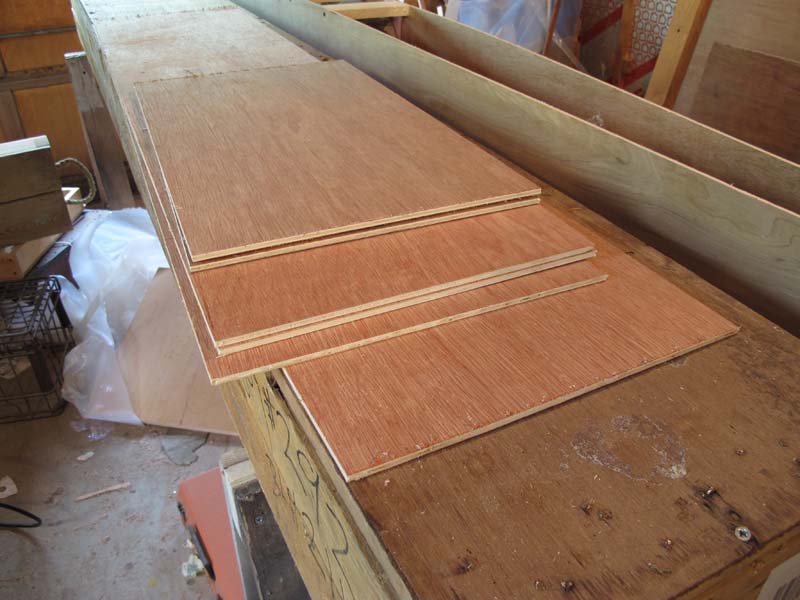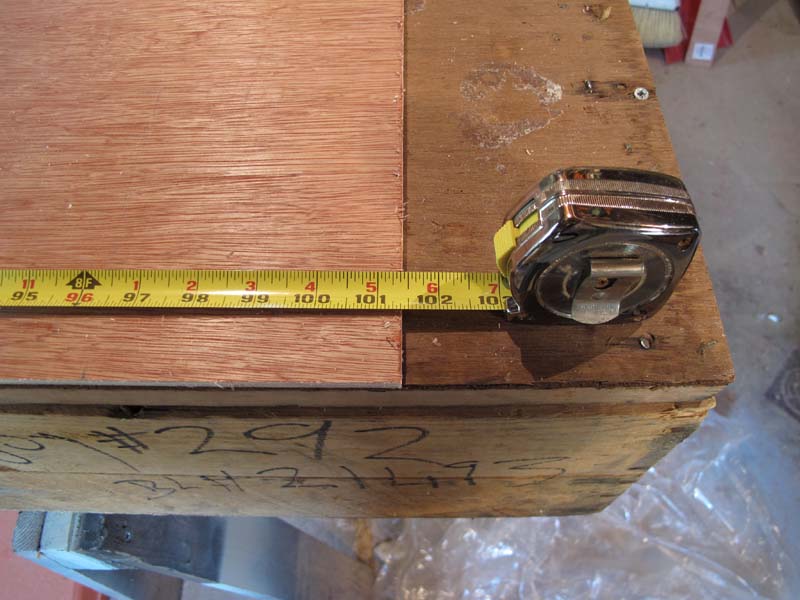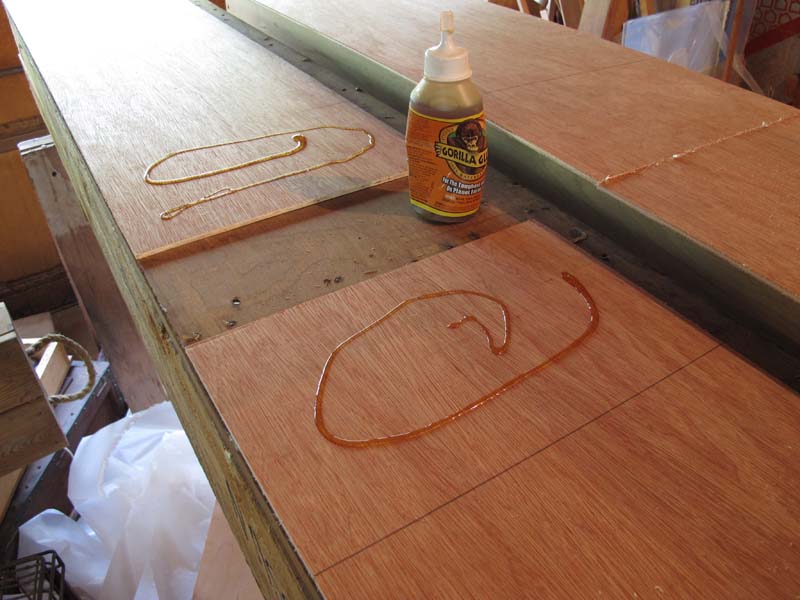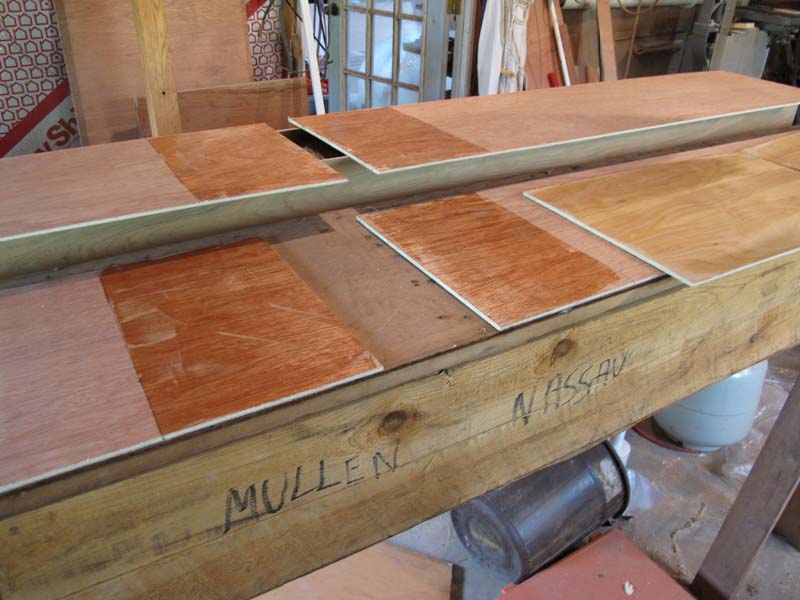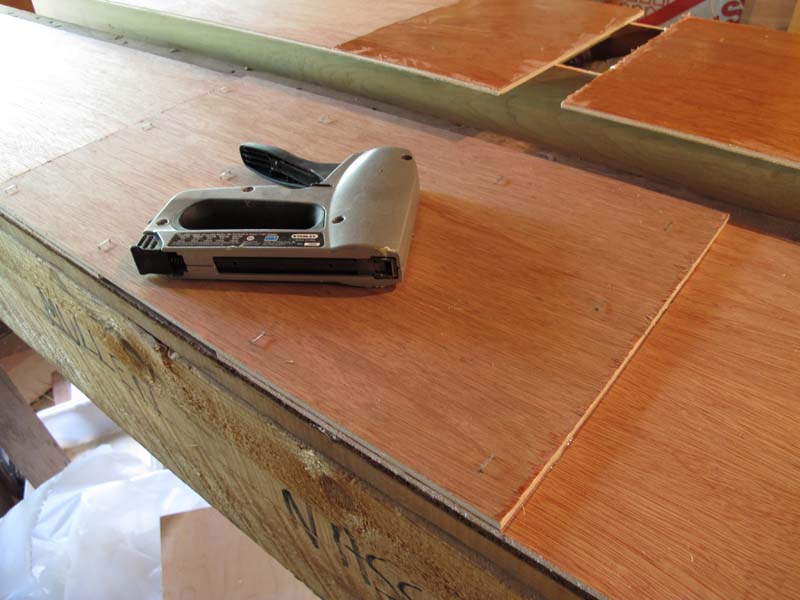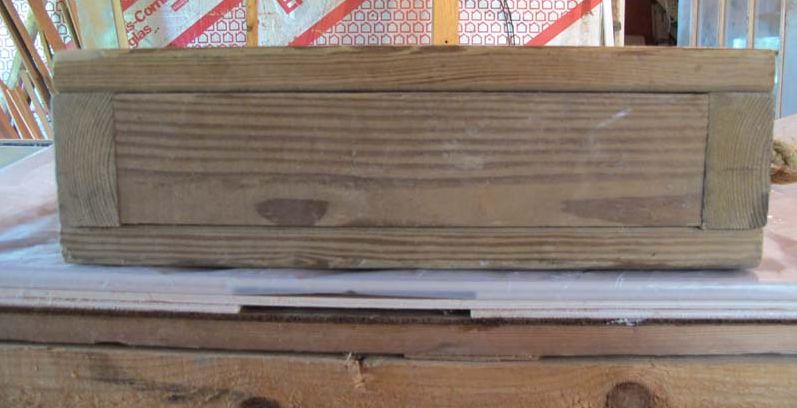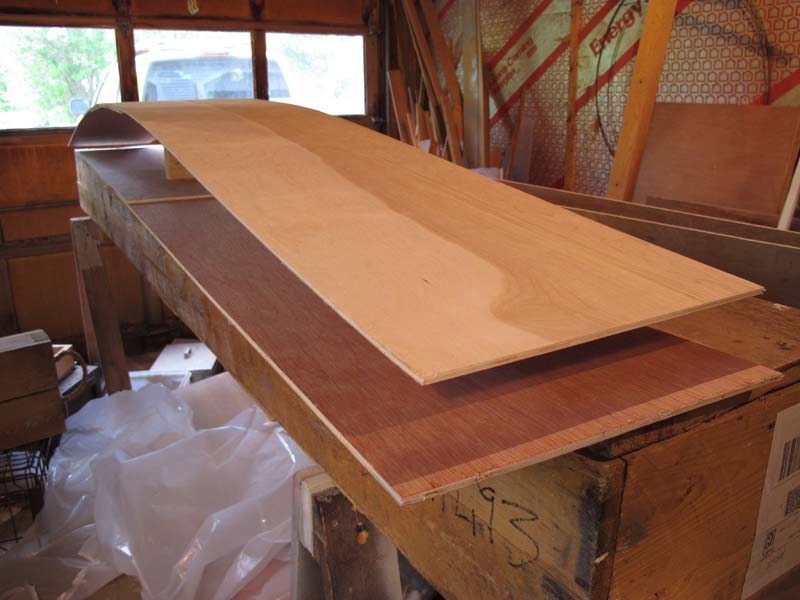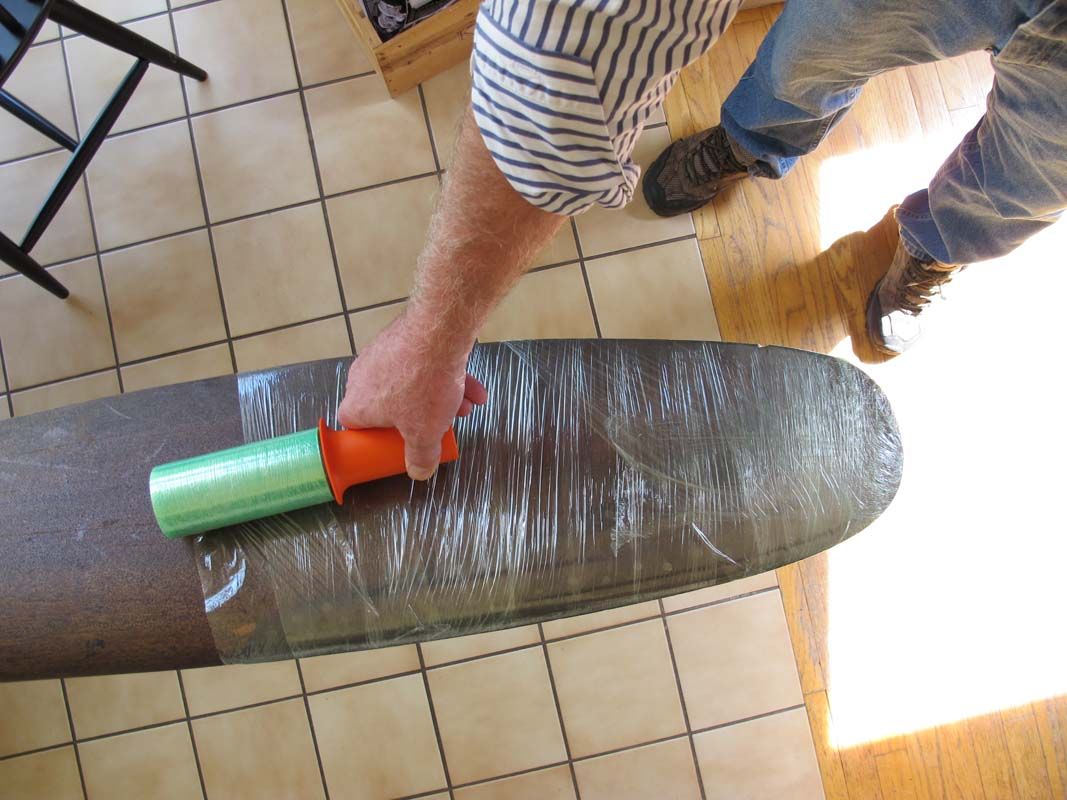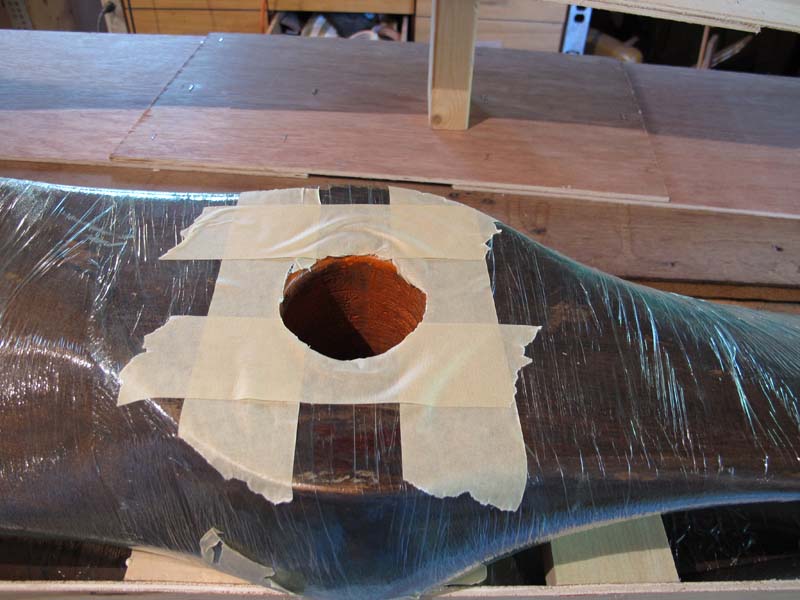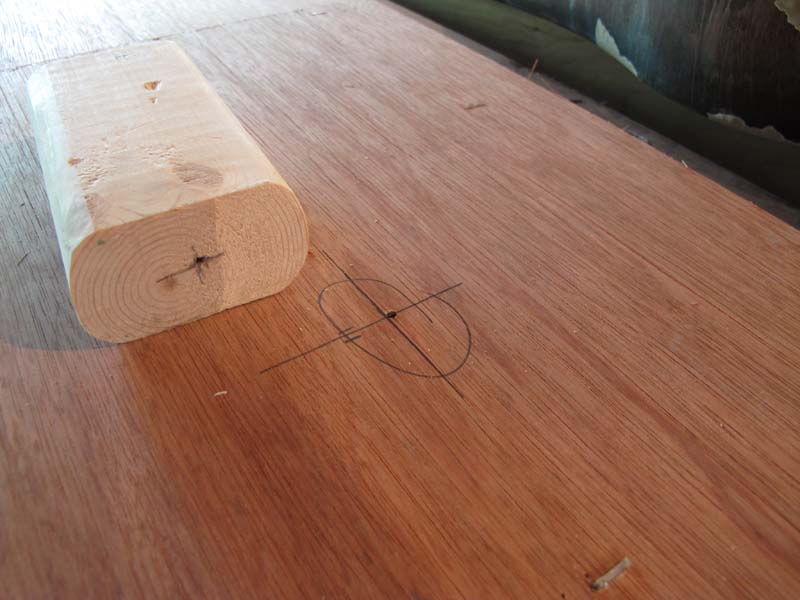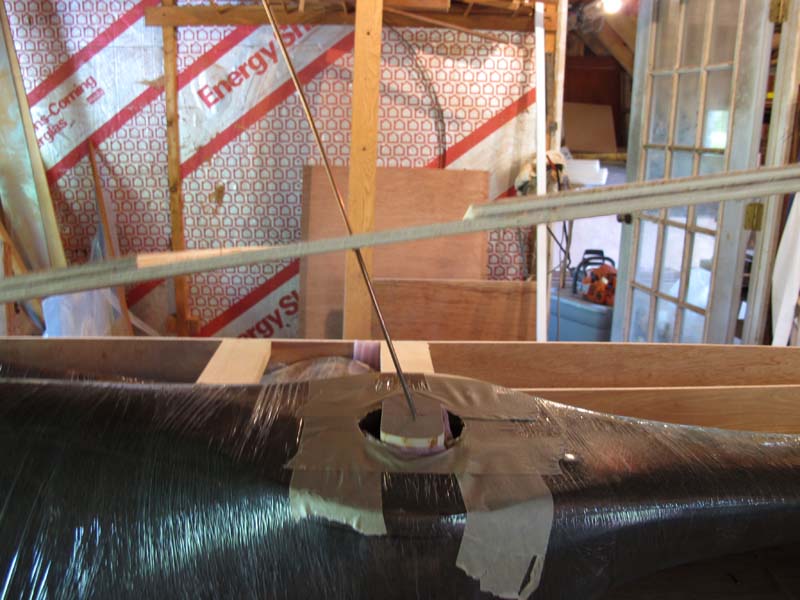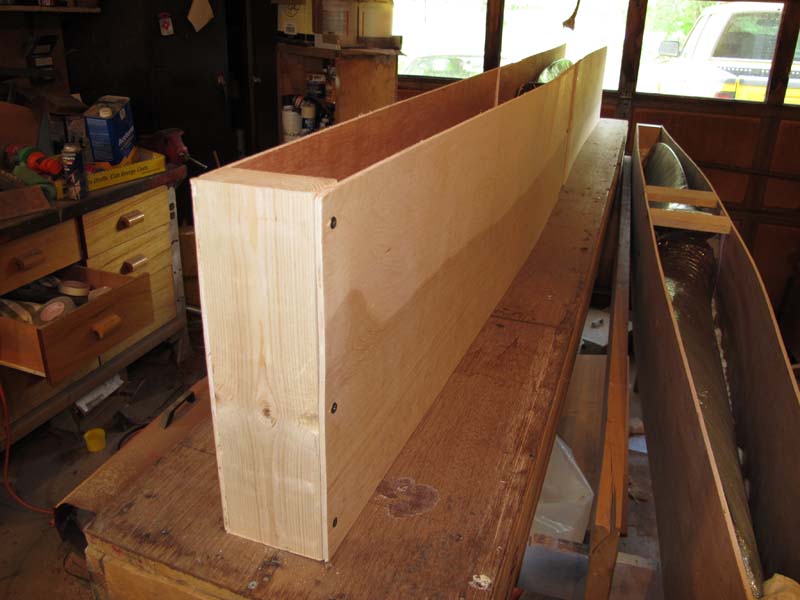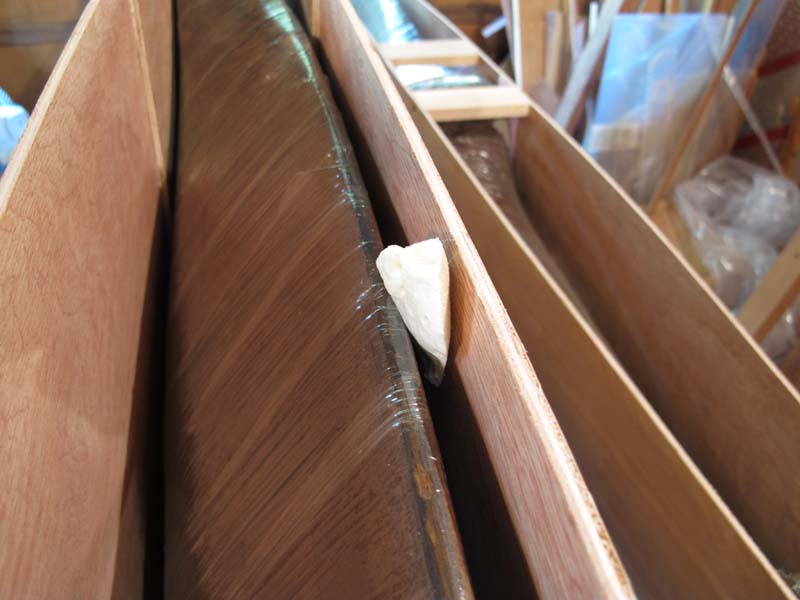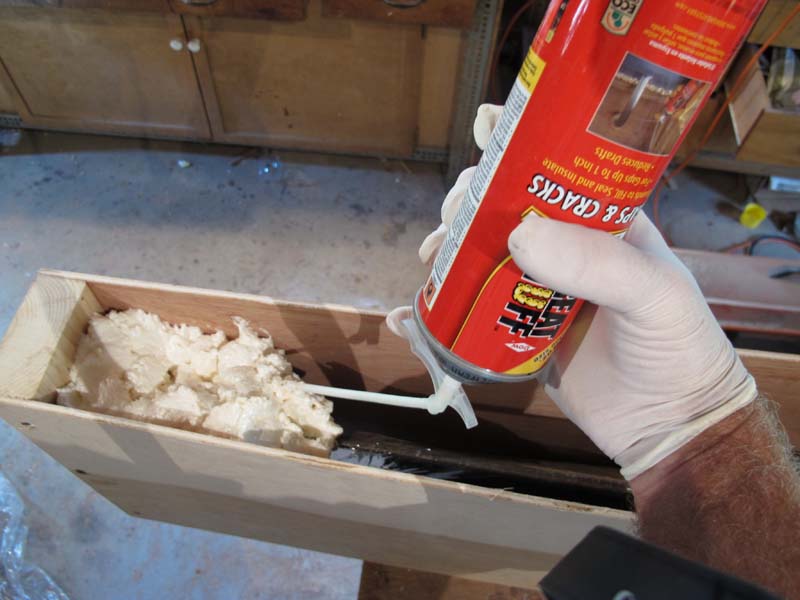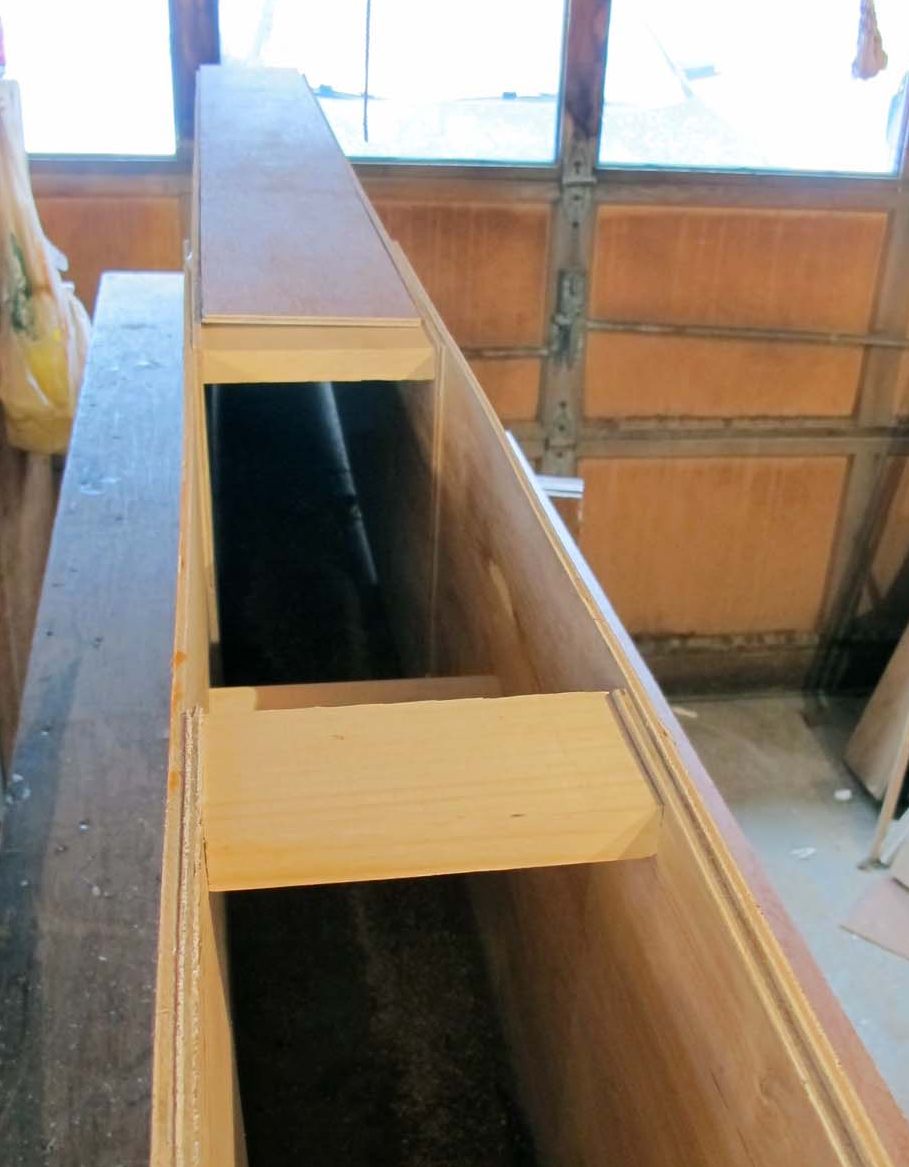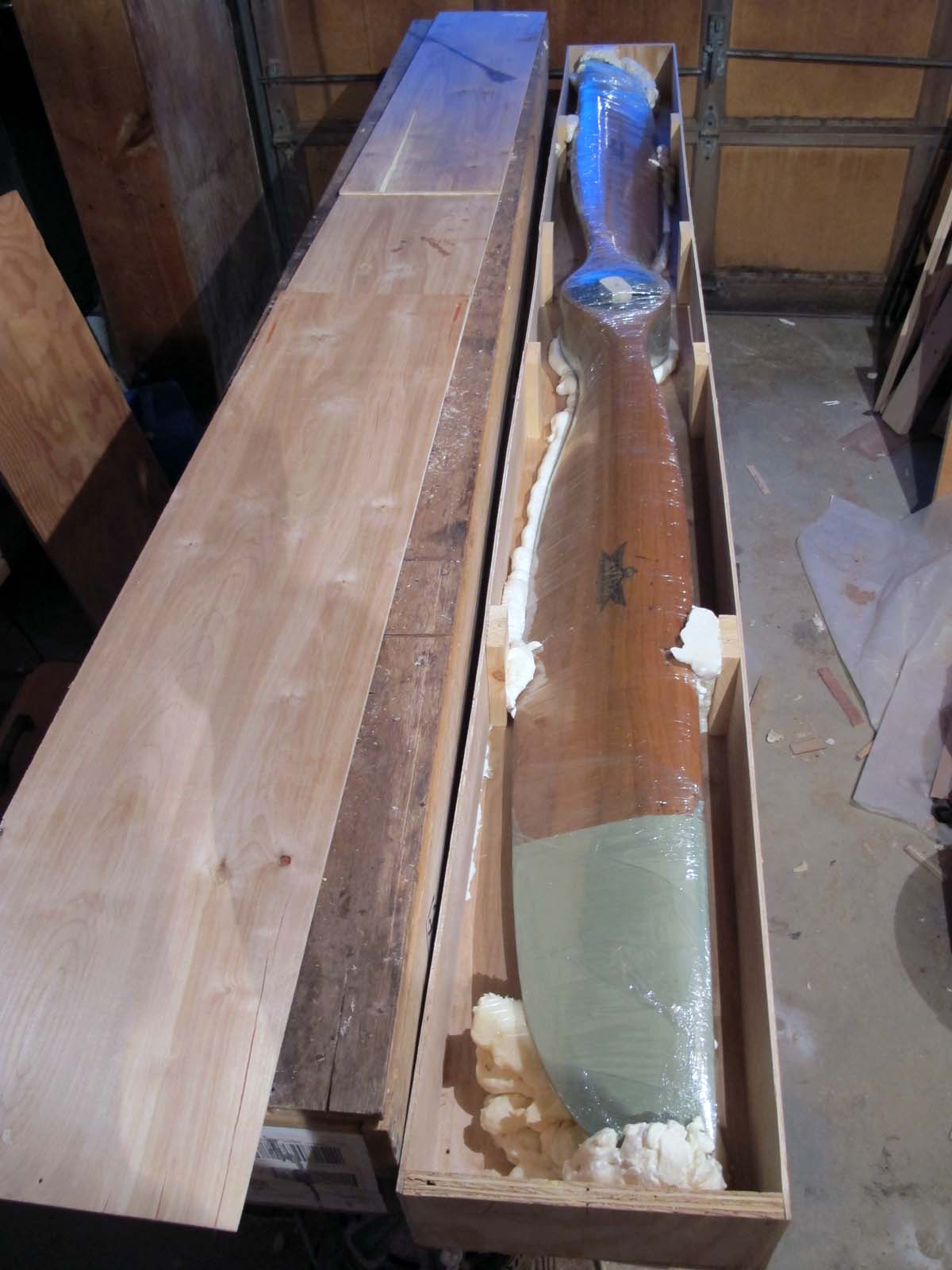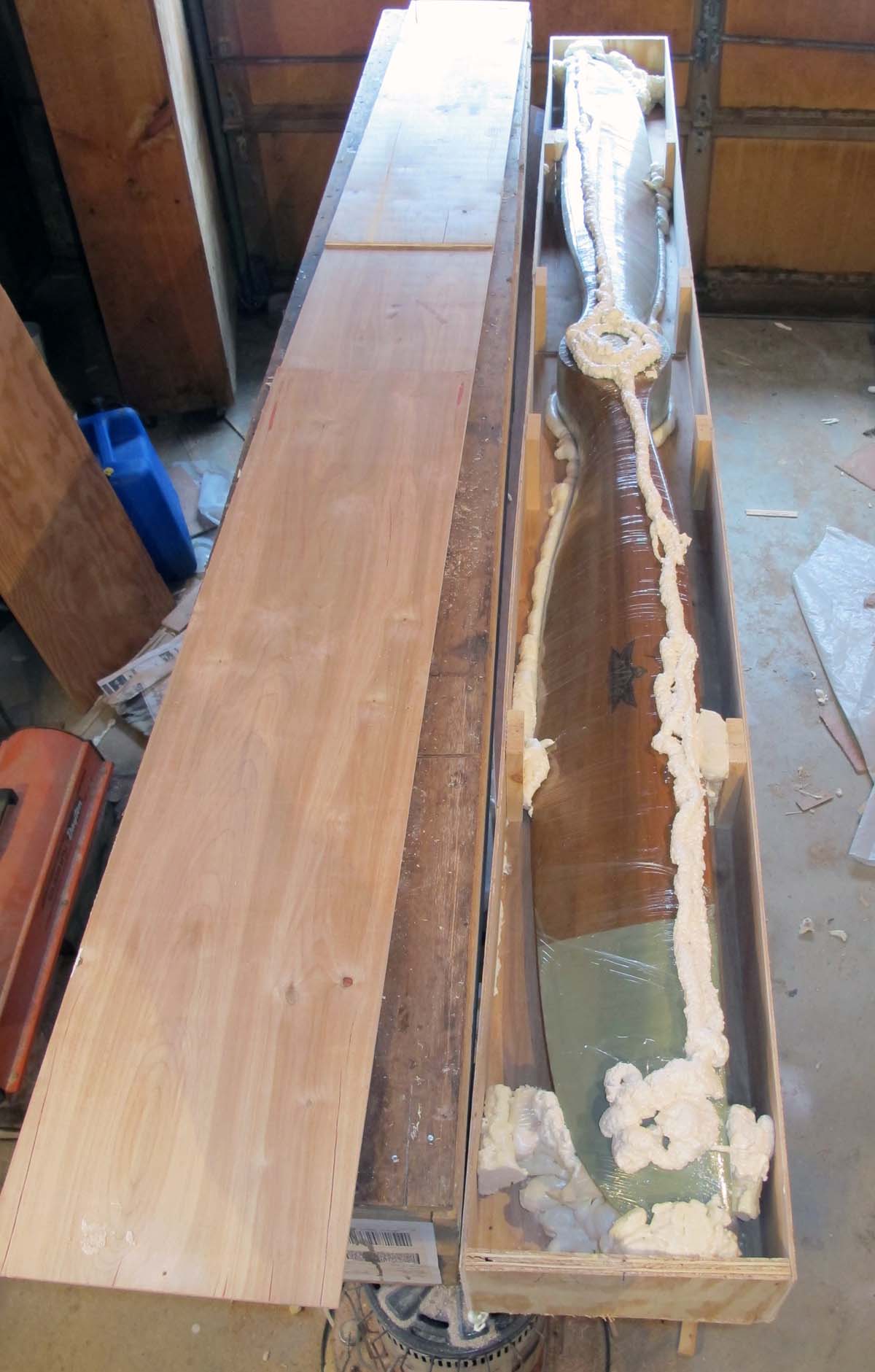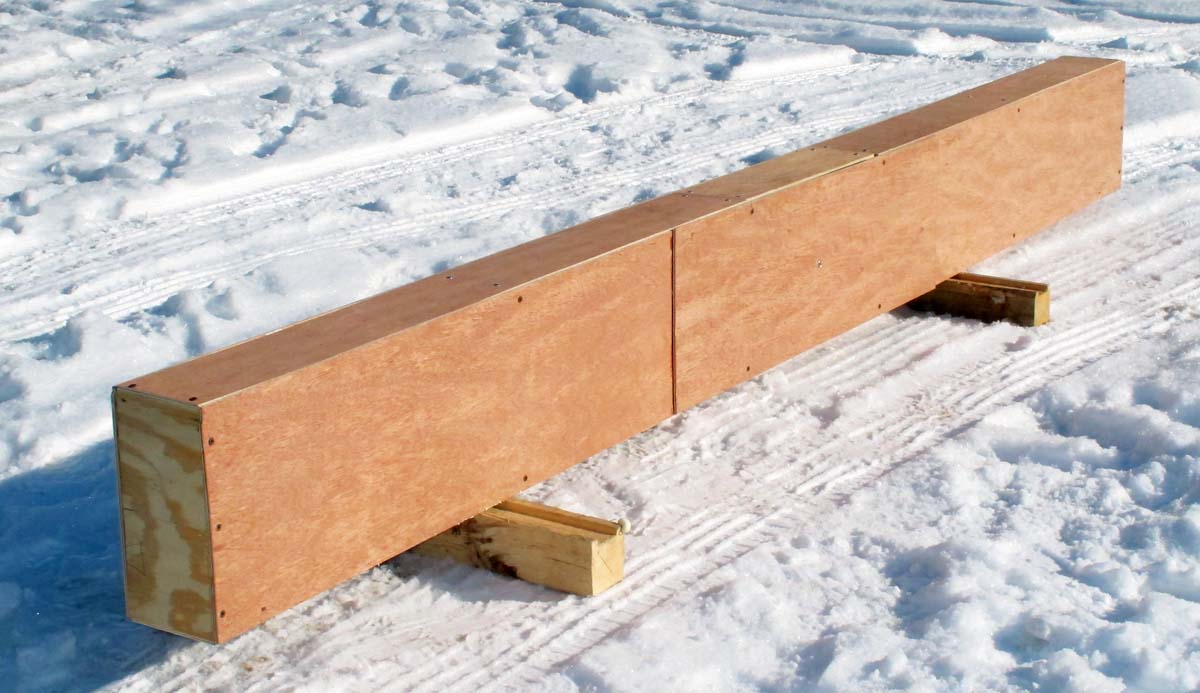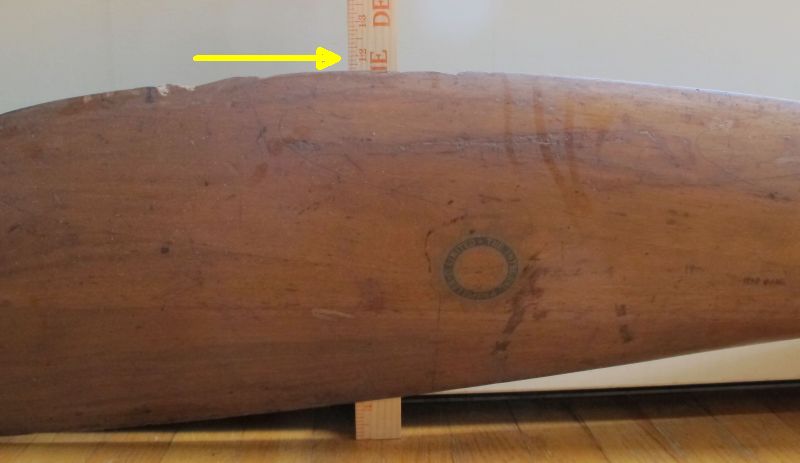5/28/11
2/26/13
10/15/14
Lightweight Crate for Large Wooden Propeller
Step by Step Instructions
A crate will need to accomodate the "whole" length, width and height of the propeller. This means that factors such as scimitar shape, coarse pitch, wide blades, etc. will all dictate the final size of the crate. To determine these parameters lay the propeller on the floor, first on its edge then on its back and measure the following distances:
Measurement "A" will determine the length of the crate. If this is under 93", cut the plywood in 8 foot lengths by "B" plus 2" in width and omit step 3 below.
Measurement "B" will determine the width of the crate. Add 2" to this measurement then have Home Depot or Lowe's cut a 4' by 8' piece of 1/4" Luan plywood into at least 5 pieces, each 4 feet long. These will be glued into longer panels later.
1 sheet of luan plywood (Most building suppliers will cut it to size for you)
2 cans of "Great Stuff" expanding foam insulation
1 roll of cellophane wrapping material
1 small container of "Gorilla Glue"
Lumber - pieces of 1x4 pine for the sides and some 3/4" plywood for the ends. These can usually be obtained from their "scrap bin". If not, buy the shortest lengths you can.
A few dozen 1 1/4" sheetrock screws.
Step 3: Glue Plywood Panels

Cut one of the 4 foot panels in half, so you can use the 2 foot sections to glue the 4 foot sections together.
Lay two 4 foot panels on a straight, flat surface with a gap in between them. The distance from edge to edge will be measurement "A" plus 3 inches. (In this example the "gap" is about 5 1/2")
Lay the 2 foot section over the gap, equidistant overlap on each side, and mark the 4 foot section as shown.
Spread a THIN layer of Gorilla glue within the marked off portion of the 4 foot pieces. I use an old hotel keycard to spread it thinly. Do this on all 4 pieces of 4 foot sections at once.
Per Gorilla's instructions, lightly wet the undersurface of the 2 foot sections.
(Optional) Align the 2 foot section over the gap then staple it into place. I use 9/16" staples, hammer them snugly, then later bend over the protruding ends on the other side, but shorter staples (3/8") that don't penetrate both pieces will work.
Put a piece of plastic over the first panel, lay the pieces of the second panel directly on top of it and staple the second panel together the same way. I put a heavy weight on them as the glue dries, since the Gorilla glue does expand.
You now have two long flexible panels that are 3 inches longer and 2 inches wider than the propeller itself.
Step 4: Create the Plywood "Shell"
Wrap the entire propeller with cellophane, overlapping half the width of the roll with each turn.
Tape around the center hole then cut a space for the middle support. I now wrap the center plug in behind the cellophane just to keep foam away from any of the exposed wood in the hub.
Cut a piece of 2x4 to measurement "C" and the width of the center bore in the propeller. Mark the middle of it and mark the middle of the plywood panels, then drill a small centering hole in each.
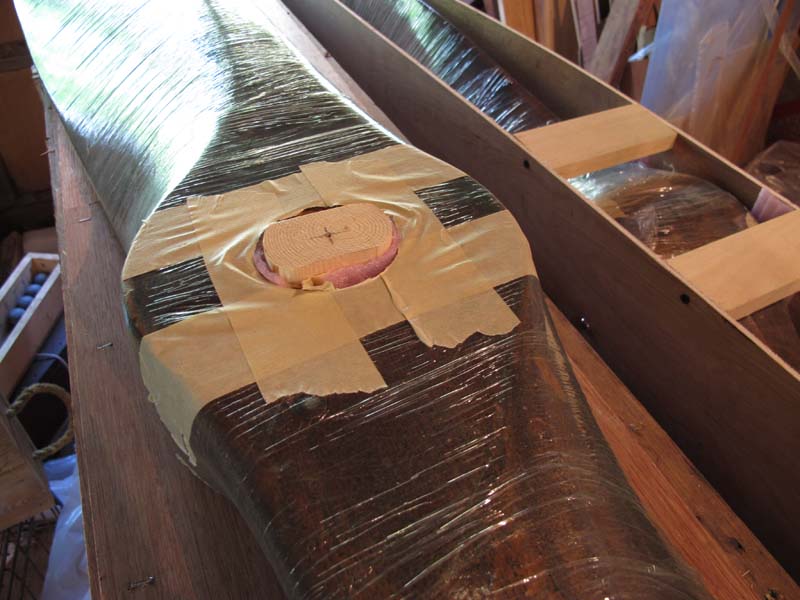
Screw the center post onto one of the panels, lay it flat, the put the propeller on the post. You can make the center post smaller than the center bore and use padding if desired. Note that I now wrap cellophane around the wooden post to block any foam from getting into contact with the hub interior.
I use a welding rod to align the top panel to the post, lower the panels together and use a single screw to hold the post.
With the prop "hanging" on the center post, turn the panels on edge. Cut pieces of plywood to fit in the ends. They should be the height of the box and 3/8" less than the width (to accomodate the plywood sides). This creates a "box" with the propeller floating in the middle so that there is some space all around it for foam to occupy.
Cut small pieces of 1x4 to join the top and bottom. These should be the height of the box and are offset from the edge by 3/16" to accomdate the thin plywood that will attach to them.
Step 5: Inject Foam Insulation
Make sure that there is a space between the propeller surfaces and the plywood. Small pieces of foam work well, and they will get incorporated in the injected foam. "Center" the propeller within the crate, so that there is roughly equal overlap of the plywood on both edges.
Squirt some foam at the tips, then run a bead of it along the edges, where the propeller might be vulnerable to impact. The foam holds the propeller in the "box" and holds the plywood away from the surface of the prop. It will easily peel away from the cellophane when unpacked. I usually do this in several steps, allowing the foam to cure slightly before re-positioning the crate.
Done!
Step2: Materials
Step 1: Measure Propeller and Determine Crate Size

Steps to Uncrate the Propeller
Here, the prop sits in the crate after foam has been injected between the box and the cellophane at any vulnerable location.
Just before attaching the top and final board, foam is injected along the cellophane that will be close to the top. Using the welding rod to center it into position the top is attached as the foam expands to fill the space around it. During removal of the top the foam will easily separate from the cellophane.
Note in this example that both "B" and "C" are larger than the hub size. A scimitar shaped prop or a wide bladed prop will have its "B" dimension larger than either the hub OR the blade. (Click on the photos below for an example.)
Determine CRATE SIZE as follows:
Add 2 to 3 inches to measurement "A" - this will accomdate end pieces
Add 2 inches to measurement "B" - this will allow wooden struts and provide an inch of plywood overhang on each edge of the prop
Add 1 inch to measurement "C" - this will allow for the width of the plywood as well as padding space inside the crate
